Congruent triangles
Categories: gcse geometry congruent triangle

Two shapes are congruent if they are the same size and shape.
We can prove that two shapes are congruent by comparing the corresponding sides and angles of both shapes. If every corresponding side and angle is equal, the shapes are congruent.
For triangles, the same conditions apply. But we often take a shortcut. If some of the sides and angles are the same, that is enough to guarantee that all the sides and angles are the same.
There are four special cases that we will look at here.
Here is a video on the topic:
SSS - three sides the same
If two triangles have three sides that are the same, then they must be congruent. For example, these two triangles both have sides a, b, and c:
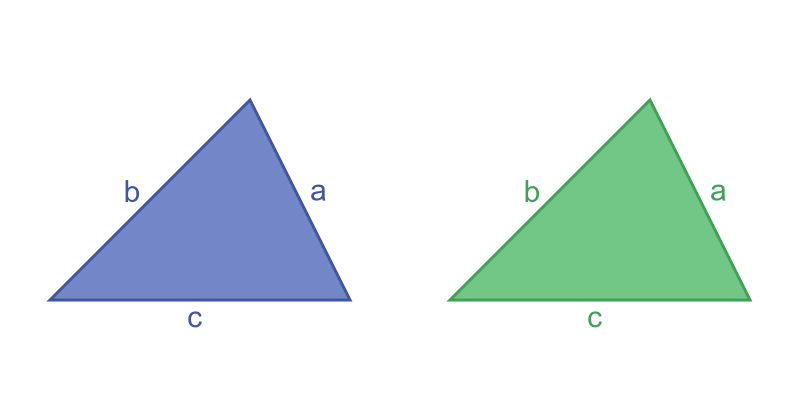
It is important to understand what this rule is saying. It isn't saying that the angles don't matter. It is saying that if three sides are the same the angles must be the same, so we don't need to check them.
To understand this rule, imagine we have three sticks of length a, b, and c. If we try to make a triangle with these sticks, there is only one way to do it:

There is no other way to make a triangle with these three lengths, so all triangles that have the same length sides must be the same size and shape. They must be congruent.
SAS - two sides and an included angle the same
If two triangles have two sides that are the same, and the angle between those sides is the same, then they must be congruent. For example, these two triangles both have sides b and c the same and angle A the same:
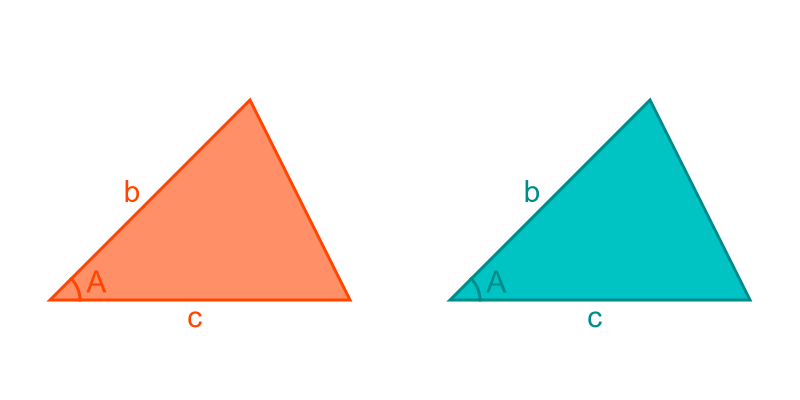
This diagram shows two lines with lengths b and c, with an angle A between them:

Once these two sides and the angle are set, there is only one possible triangle it can make. The third side is shown by the dotted grey line.
This means that any two triangles that have two sides and the included angle equal must be congruent.
AAS - two angles and a corresponding side the same
If two triangles have two angles and a corresponding side the same, they must be congruent. For example, these two triangles have angles A and B the same and side c the same:
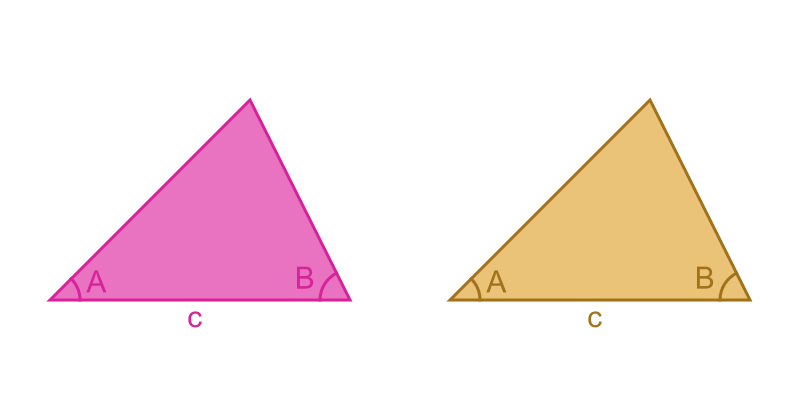
These triangles are congruent.
This diagram shows a side of length c, and the two angles A and B:
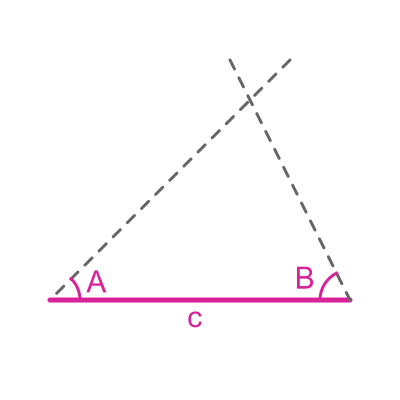
The dotted grey lines show where the other two sides must be (because they must make the correct angle with the base). This means that from the side and two angles, there is only one possible triangle. This proves that if two triangles have two equal angles and an equal side enclosed by those angles, they are congruent.
There is another case, where the known side is not enclosed by the two equal angles, like this:

Remember that the angles in a triangle add up to 180 degrees. So if two triangles have equal angles B and C they must also have equal angles A. So this case becomes the same as the case where the side is enclosed between two equal angles.
The AAS rule only works for corresponding sides - the same side on each triangle. This case doesn't meet the condition:
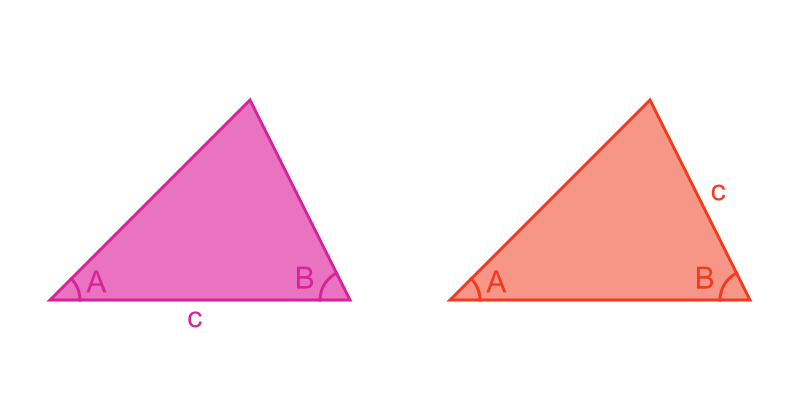
That is because, in the left-hand triangle, the side between the two angles has length c. But in the right-hand triangle, a different side has length c. These two triangles will not generally be congruent.
RHS - right angle, hypotenuse, side
If we know that the triangles are both right-angled triangles, then they will be congruent if the hypotenuse and one other side are equal:
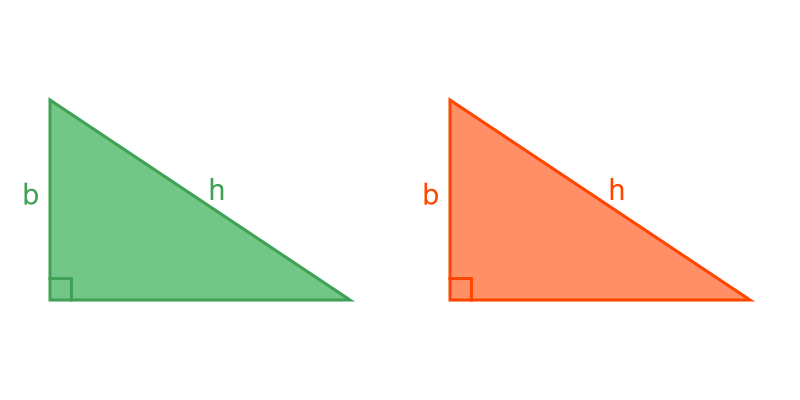
This can be shown using Pythagoras' Theorem - the square of the hypotenuse is equal to the sum of the squares of the other two sides.
If two right-angled triangles have the same hypotenuse h, and an equal side b, it follows that the other side c must be equal:

So we know that both triangles have three sides that are equal, so they are congruent due to the SSS rule above.
Common mistakes
There are two common situations that don't prove congruency.
The first case is triangles that have two sides the same and an angle that isn't between the two sides. It is usually possible to draw two different triangles that match the condition, that are not congruent:
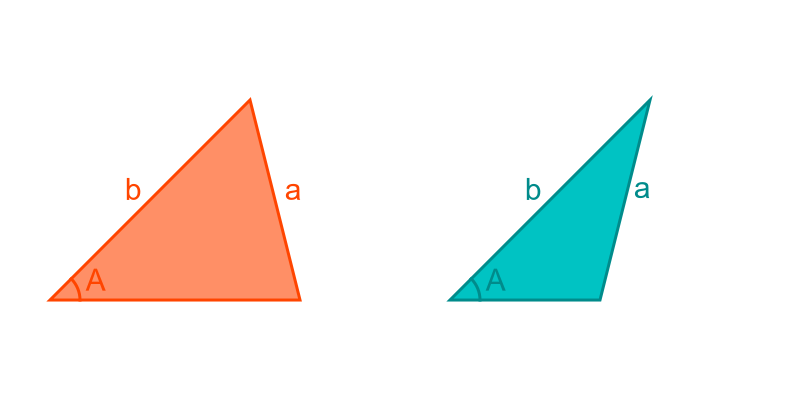
In this case, the two sides a and b are the same in both triangles, and the angle A is also the same. But it is possible to draw two different triangles that match that condition, one with an obtuse angle and one with an acute angle.
The second case is two triangles that have all three angles the same. In that case, is it possible to draw triangles of different sizes that have three angles the same:
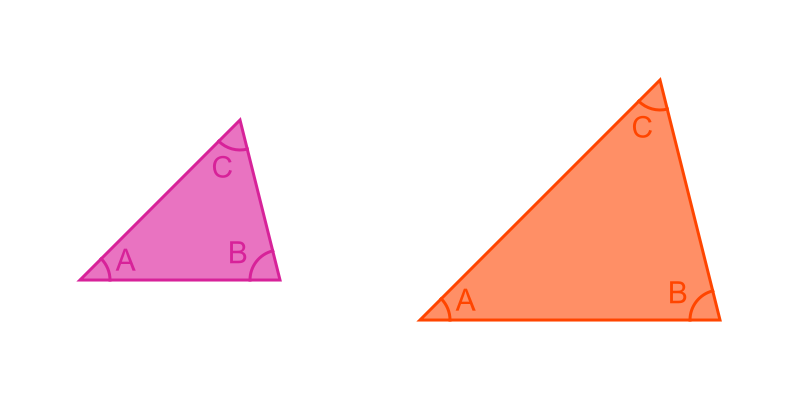
In fact, these triangles are similar (which means they are the same shape but not the same size) but not congruent.
See also

Join the GraphicMaths Newletter
Sign up using this form to receive an email when new content is added:
Popular tags
adder adjacency matrix alu and gate angle answers area argand diagram binary maths cartesian equation chain rule chord circle cofactor combinations complex modulus complex polygon complex power complex root cosh cosine cosine rule countable cpu cube decagon demorgans law derivative determinant diagonal directrix dodecagon eigenvalue eigenvector ellipse equilateral triangle euler eulers formula exercises exponent exponential exterior angle first principles flip-flop focus gabriels horn gradient graph hendecagon heptagon hexagon horizontal hyperbola hyperbolic function hyperbolic functions infinity integration by parts integration by substitution interior angle inverse hyperbolic function inverse matrix irrational irregular polygon isosceles trapezium isosceles triangle kite koch curve l system line integral locus logarithm maclaurin series major axis matrix matrix algebra mean minor axis n choose r nand gate net newton raphson method nonagon nor gate normal normal distribution not gate octagon or gate parabola parallelogram parametric equation pentagon perimeter permutations polar coordinates polynomial power probability probability distribution product rule proof pythagoras proof quadrilateral questions radians radius rectangle regular polygon rhombus root sech segment set set-reset flip-flop sine sine rule sinh sloping lines solving equations solving triangles square square root standard curves standard deviation star polygon statistics straight line graphs surface of revolution symmetry tangent tanh transformation transformations trapezium triangle turtle graphics uncountable variance vertical volume volume of revolution xnor gate xor gate